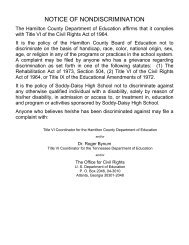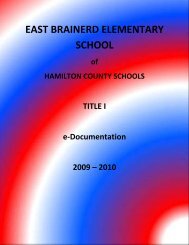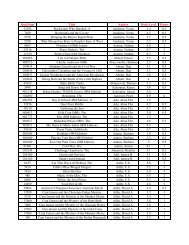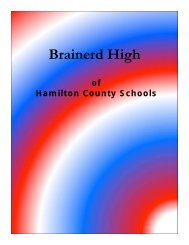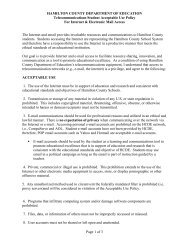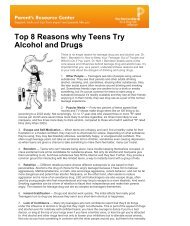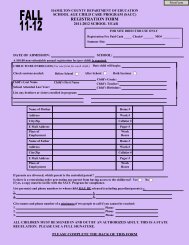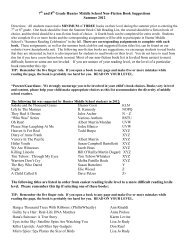RESOURCE PACKET Assessment of Language Impairment
RESOURCE PACKET Assessment of Language Impairment
RESOURCE PACKET Assessment of Language Impairment
Create successful ePaper yourself
Turn your PDF publications into a flip-book with our unique Google optimized e-Paper software.
<strong>Assessment</strong> Guidelines for <strong>Language</strong> <strong>Impairment</strong>s<br />
LANGUAGE ASSESSMENT CONSIDERATIONS<br />
The school environment places heavy demands on students to comprehend, interpret and use<br />
all aspects <strong>of</strong> verbal and nonverbal communication. Students must be able to communicate<br />
with others who have different communication skills, styles and backgrounds and for a variety <strong>of</strong><br />
purposes in different settings. They must be competent in listening, speaking, reading and<br />
writing as they learn the curriculum and interact with others. Consequently, the SLT must<br />
conduct a comprehensive assessment that includes an appropriate balance <strong>of</strong> formal and<br />
descriptive assessment instruments. The comprehensive assessment utilizes procedures that<br />
identify areas <strong>of</strong> strength and weakness and examine how the student functions<br />
communicatively in the environments in which s/he participates.<br />
Both formal (standardized) and informal (descriptive) assessment tools<br />
shall be used to evaluate language.<br />
A minimum <strong>of</strong> two (2) <strong>of</strong> the following measures shall be used:<br />
1. criterion- and/or norm-referenced instruments,<br />
2. functional communication analyses,<br />
3. language/communication samples.<br />
At least one standardized, comprehensive measure <strong>of</strong> language ability shall be included<br />
in the evaluation process.<br />
• A standardized test is an evaluation tool that is administered in a prescribed way for a<br />
specific population. Criterion-referenced and norm-referenced tests are examples <strong>of</strong><br />
standardized tests.<br />
• A comprehensive measure is defined as a measure that yields a receptive, expressive,<br />
and total language score.<br />
o A norm-referenced test that yields a receptive language quotient, an expressive<br />
language quotient, and a total language quotient is preferred whenever possible.<br />
Receptive and expressive vocabulary tests alone do not meet this requirement.<br />
o Norm-referenced tests selected for administration should be the most recently revised<br />
versions <strong>of</strong> such tests.<br />
o Norm-referenced tests measure decontextualized communication skills using formalized<br />
procedures.<br />
o They are designed to compare a particular student’s performance against the<br />
performance <strong>of</strong> a group <strong>of</strong> students with the same age and other characteristics<br />
identified by the test author(s) in selecting the normative population.<br />
o They yield standard scores that are usually based on a mean <strong>of</strong> 100 and a standard<br />
deviation <strong>of</strong> 15.<br />
o They are not designed to describe particular characteristics <strong>of</strong> children as they engage in<br />
the process <strong>of</strong> communication.<br />
o Meaningful comparisons between the student’s performance and that <strong>of</strong> the test<br />
population are possible only when the test has clear administration requirements,<br />
scoring criteria, and validity and when it is reliable and standardized on a sufficiently<br />
large and representative sample population.<br />
ED –4072 / Rev. 07.09<br />
Department <strong>of</strong> Education<br />
<strong>Language</strong> <strong>Impairment</strong> Resource Packet




